When a lightning bolt struck Ben Franklin’s kite in 1752, it sent a direct current of energy to the key he’d tied at the end of the kite’s string. Ever since then, we’ve been looking at ways of generating, transmitting, storing, and using that energy — and modern human existence is now totally dependent upon it.

Our motorhomes, caravans and campervans are obvious examples of this dependence. They all need a source of electricity to function.
Even our gas appliances and diesel heaters are reliant on having some form of electrical power to ignite their burners. It’s therefore important to know how much 12 volt (V) energy your motorhome has stored before settling into a long stretch of freedom camping.
|
Table of Contents |
A 12 volt pool of energy
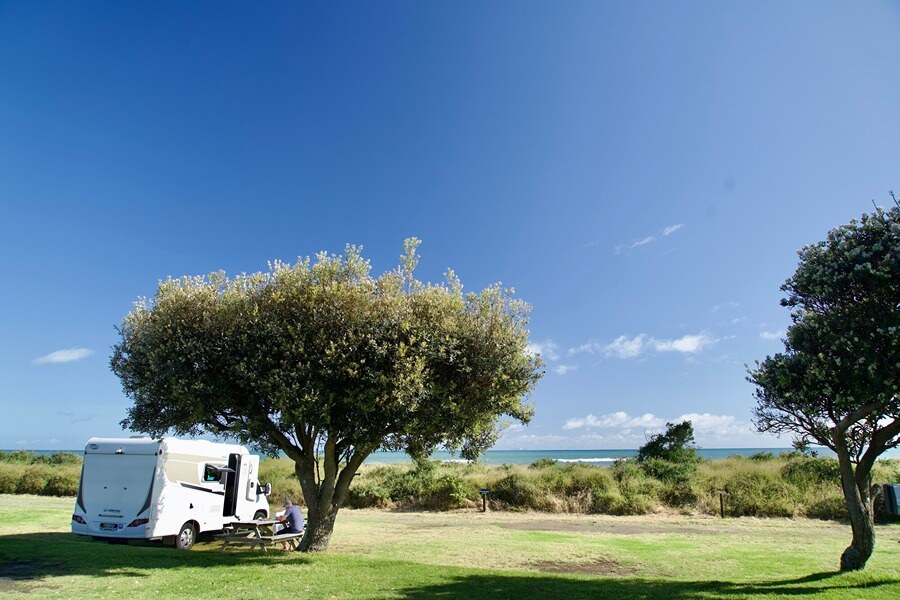
Driving to a freedom camping site will usually top up the energy stored in your 12V domestic battery. By the time you park up, your battery monitor should be at its fullest level.
It’s important to know the:
- Type of battery being used to store energy
- Capacity of the battery on domestic duty in your motorhome.
Absorbed Glass Mat batteries
Absorbed Glass Mat (AGM) batteries are commonly fitted to motorhomes for their maintenance-free advantages over old lead-acid batteries.
If your domestic battery is of the AGM type, you’ll need to take into account that it has a 50 percent discharge limit. For example, if your motorhome power supply is a single 100 amp hour (Ah) AGM battery while off-grid, only 50Ah of power will be available to you.
Similarly, you could be running a pair of 100Ah AGM batteries that operate in tandem to supply power to your parked motorhome. In this case, you’ll have 100Ah of power available before the batteries require recharging.
|
Discharging AGM Batteries Discharging an AGM battery below 50 percent of its capacity will cause irreparable damage. |
Lithium-ion batteries
Lithium-ion batteries offer an advantage over their AGM counterparts — they can be discharged down to 20 percent of their capacity.
Using our above examples, a single 100Ah lithium-ion battery would last for 80Ah. Likewise, if you had a pair of 100Ah batteries of this type, you’d enjoy a supply of 160Ah of power.
A motorhome with lithium-ion domestic batteries can therefore park up for 60 percent longer at remote camping spots — compared to one using AGM batteries with the same storage capacity.
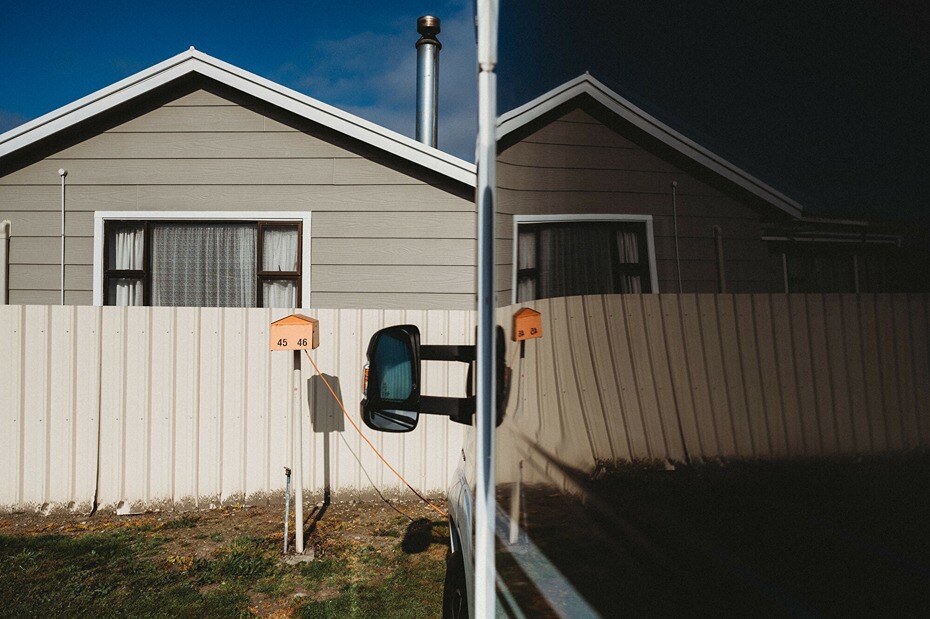
Solar panels and battery recharging
Solar panels trickle energy from the sun into the domestic battery array when parked. They let you extend how long you can freedom camp before recharging the 12V battery by either:
- Driving away or
- Plugging into the national grid.
Check out The Top Benefits of Motorhome Solar Panels.
Converting watts into amps
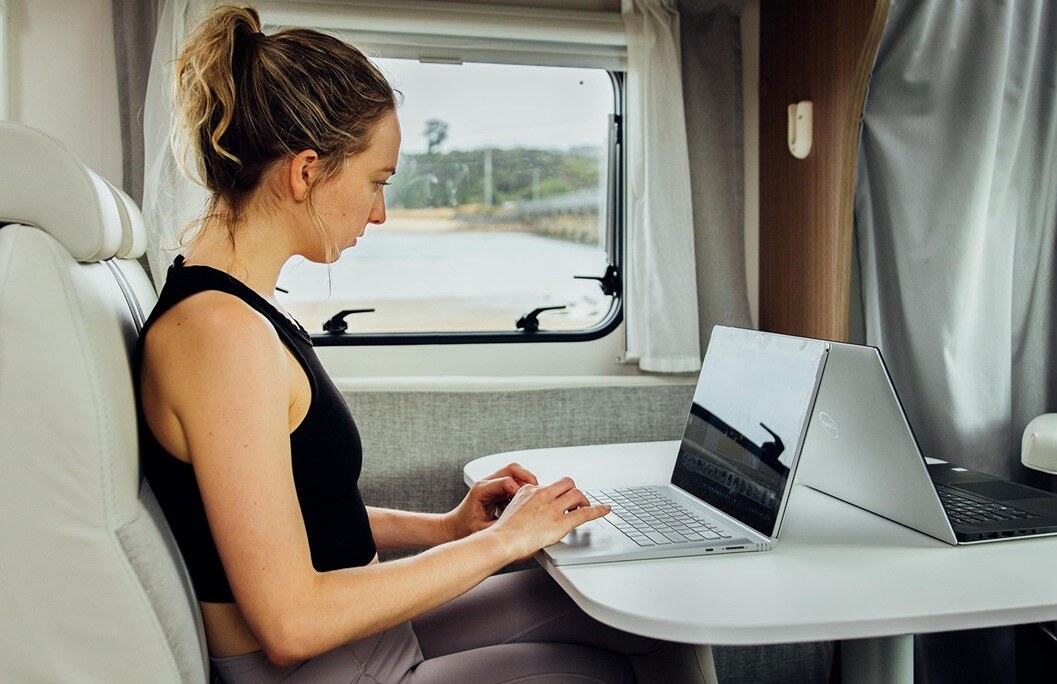
Naturally, the intensity of the sun’s energy will define the performance of any solar panel.
A 100 watt (W) solar panel will transfer between 300 and 600W of power to your battery on a summer day. Divide this figure by ten to convert your electrical power in watts to electrical current measured in amps — and you’ll get 30 to 60 amps (A) per day.
That’s barely enough to run an average motorhome 12V fridge which draws around 60A of current over 24 hours.
|
Freedom Camping To fully set up your motorhome for extended periods of freedom camping, you’ll need multiple solar panels — backed up by fit-for-purpose levels of battery storage. |
Find out what to look for when buying a used motorhome with solar panels.
Starting up your engine
A simpler method of maintaining domestic battery reserves when camping off-grid is to start up your motorhome’s engine and let it recharge your 12V battery.
Ideally, your engine would comply with the Euro 6 emission standard to prevent odious pollution of the air surrounding the campsite.
The Euro 6-compliant Volkswagen Grand California is equipped with a single AGM battery that can be topped up by its single solar panel. But it also has a fast-idle button to enhance domestic battery recharging via its diesel engine when you’re parked up.
Do an energy stocktake for battery sustainability
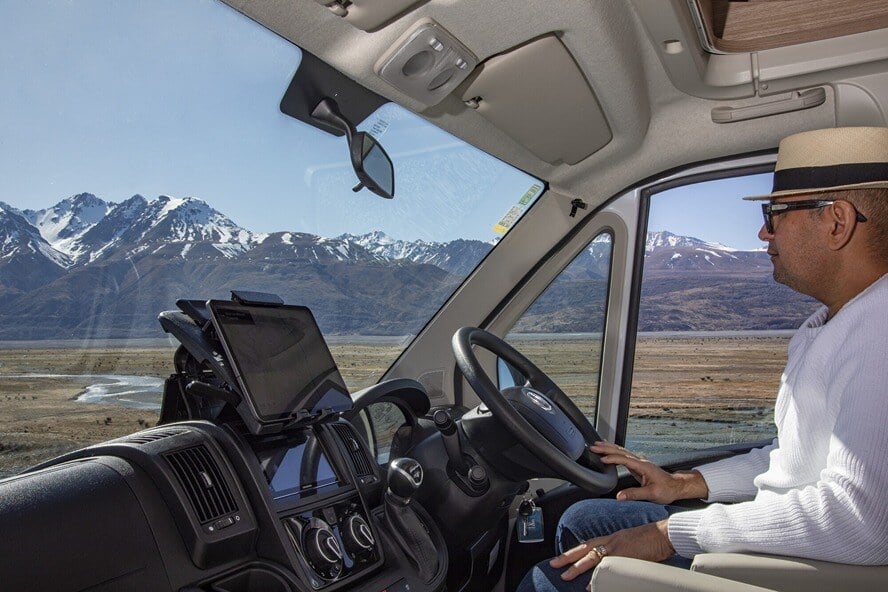
Running low on 12V energy storage while parked isn’t a big deal — as it’s easily solved by taking your motorhome for a drive. If you know how much current your appliances and devices are usually pulling from the battery, you’ll be able to better plan your itinerary.
A stocktake of the draw on your battery is easily done by consulting the stack of appliance manuals that come with the delivery of every new motorhome. If those aren’t available, the energy consumption of your appliances can usually be found on the ID panels located at the rear of each gadget.
Let’s go over what you can expect to find in terms of the total domestic energy consumption of an average-sized motorhome with a fully-equipped kitchen.
Learn about purchasing with purpose and Wilderness's B Corp certification.
Fridge
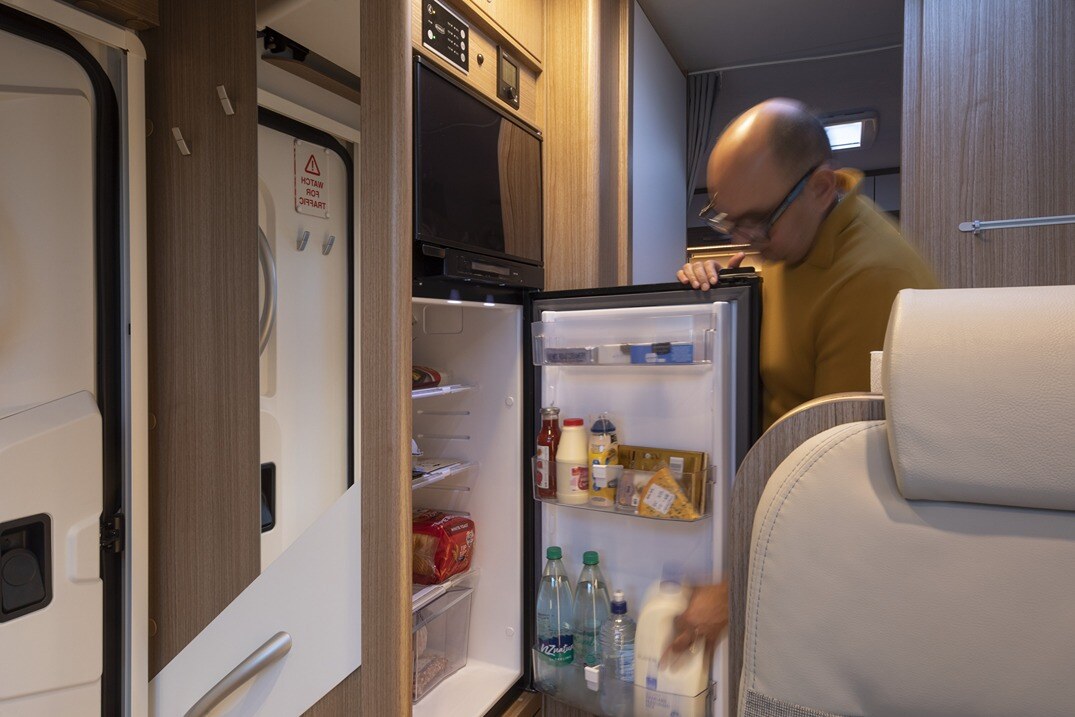
If your fridge is powered solely by 12V electricity when your motorhome isn’t plugged in, it will be the most demanding current of all your motorhome’s appliances.
Are you planning to freedom camp often? If so, it’s preferable to have a fridge that’s capable of running on:
- LPG — liquefied petroleum gas, and
- DC — 12V direct current, and
- AC — 240V alternating current.
Three-way fridges are the freedom RV camper’s best friend.
When running on a 12V current from the domestic battery, a modest 110 litre fridge will draw around six amps per hour when first starting up. It’ll then settle down to 2.5 amps per hour when at your chosen cooling temperature.
A smart way to conserve battery power is to cool your fridge’s interior while still on mains power supply — before heading to a freedom camping site.
Other factors that will affect energy consumption are the:
- Number of times you open and close the fridge door
- Amount of fridge space taken up by food and drink — the fuller the better
- Ambient temperature of your motorhome.
Ensuring your fridge is full of food and the door is closed as much as possible are strategic ways of keeping its energy consumption below 60Ah per day.
Find out more about how to keep food and drinks cold in your motorhome and learn about motorhome fridges and coolers in general.
Lighting
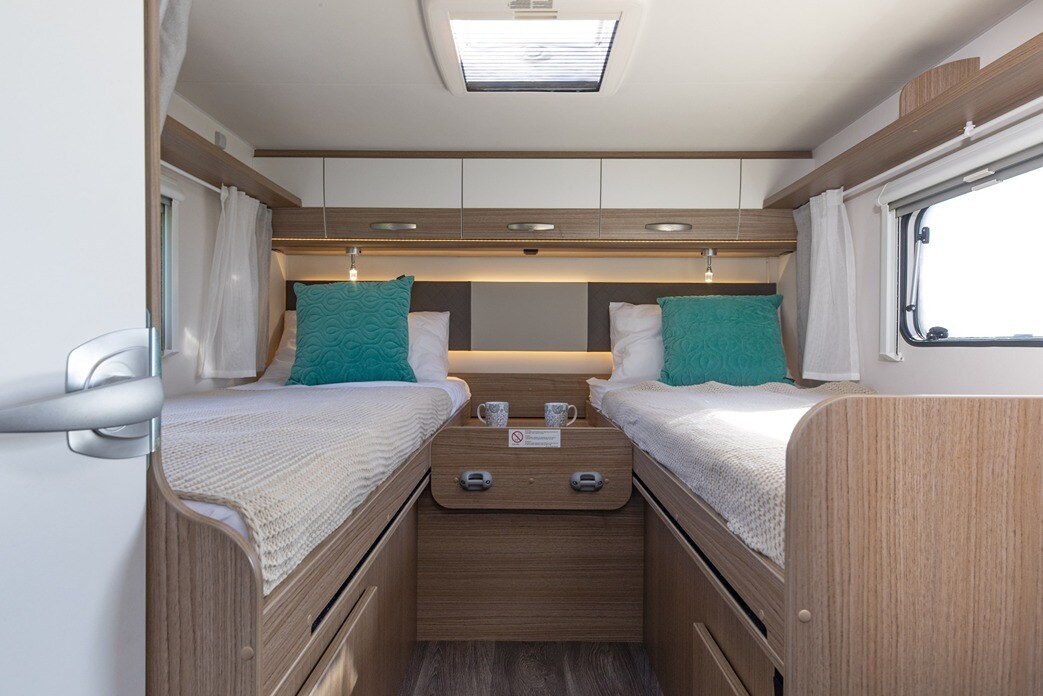
Most motorhomes are fitted with LED lights these days and they’re a huge advantage when it comes to conserving battery storage. Each LED array will draw between 0.1 and 0.4A of current every hour. The combined LED lights of an average motorhome will need roughly 2A over a 24 hour period.
See our guide to motorhome lighting for greater insights on this topic.
Entertainment
Leave the DVDs at home if you want to conserve your 12V of power. The little electric motor that spins the discs will increase the draw on your motorhome battery.
Having said that, a modestly-sized TV/DVD unit probably only uses an average of 1.7A per hour. If you watch an hour of news followed by an hour of entertainment it adds up to about 3.5A per day.
Water pump
The good news is that your water pump will only run for about 15 minutes each day. The bad news is it’s quite hungry for current — consuming around 5.2A per hour. In total, you can expect your pump to draw around 1.5A per day.
Charging devices
An iPhone will draw around 2.6A per hour to fully charge. Fully recharging an iPad will require 11.6Ah. Expect the recharging of comparable devices from other brands to draw similar levels of 12V current.
There’ll likely be times when your house battery will be called upon to recharge these essentials. However, your best strategies are to:
- Recharge devices while driving
- Add a portable battery pack to your luggage — so you can top up your devices while off-the-grid and conserve your motorhome battery’s storage.
Realistically, you may want to budget around 3Ah per day for servicing your devices.
Total draw on your motorhome battery
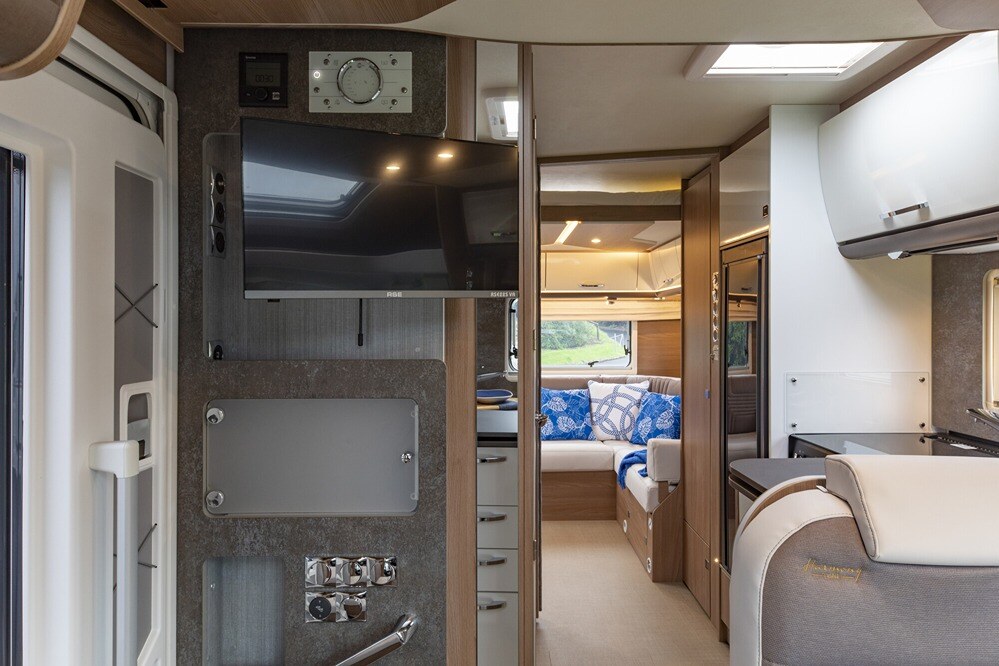
Putting to one side the power consumed by the igniters on your motorhome’s gas kitchen appliances, we can calculate the estimated total daily draw on your battery.
Total daily draw on your motorhome battery |
|
Appliance |
Amp hours per day |
| Fridge | 60 |
| Lighting | 2 |
| Entertainment | 3.5 |
| Water pump | 1.5 |
| Devices | 3 |
| Total daily battery draw | 70Ah per day |
If your motorhome had twin 100Ah AGM batteries, they would last for 35 hours before needing to be recharged — at this level of consumption. A pair of 100Ah lithium-ion batteries would need recharging before 55 hours of use.
If you're bound for adventure, check out our best off-road motorhome.
Other electrical appliances
If you have an inverter, it’ll supply 240V AC output from your 12V DC battery input to power up standard house plugs fitted inside your motorhome. But it will also place increased demand on your battery.
Some electrical appliances simply drain too much power from your house battery, such as:
- Hair dryers — a standard hair dryer used on high will draw about seven to 13 amps
- Microwaves — a typical microwave will draw in the region of seven to 13 amps
- Coffee makers — a standard coffee machine will draw around five to eight amps.
Learn all about inverters and how they work.
Single purpose power
It’s best to have a dedicated electrical infrastructure when thinking about powering 240V electrical appliances and devices from your motorhome’s battery. In other words, have a circuit for a specific purpose — to power a single appliance.
An 1800W induction cooktop, for example, can consume as much current from your battery in 20 minutes as a 12V fridge uses over an entire day.
Investing in solar
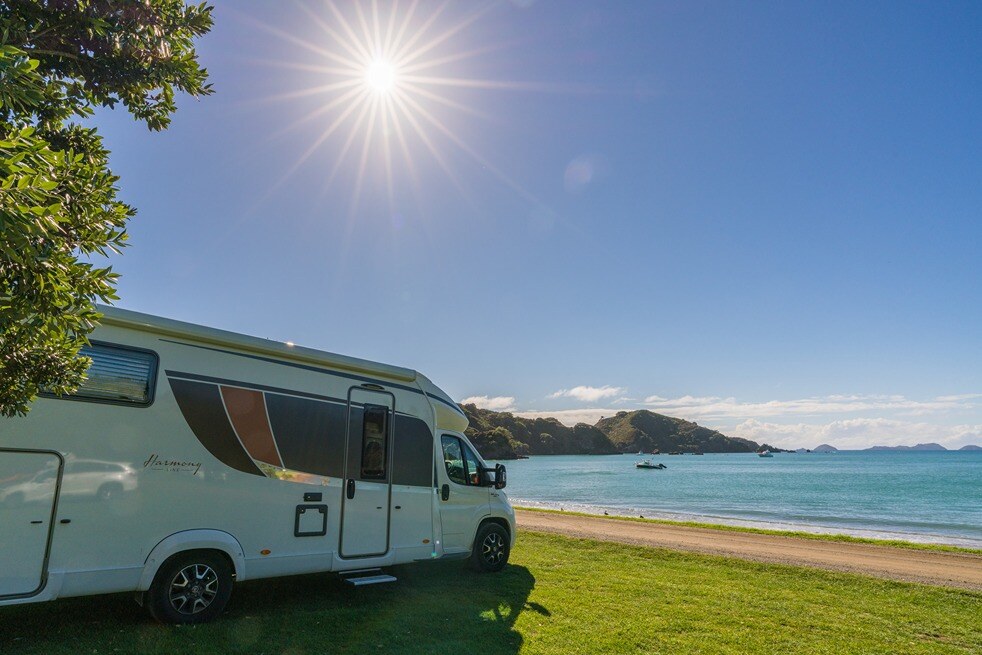
If you prefer motorhoming with extra electrical appliances that will chew through your battery, you’ll need a solar set up to provide enough power source to use them off-grid.
Best then to invest heavily in solar recharging infrastructure. Add an appropriate level of battery and wiring capacity if you want to fit an inverter for recharging e-bikes and other high-demand conveniences like coffee machines.
The consumption of these types of items is usually quoted in watts and the draw on your battery can be calculated by dividing by ten. For instance, that 1800W cooktop will pull current out of your battery at a rate of 180 amps per hour.
Expanding your existing motorhome energy supply by installing an inverter is therefore best contemplated if you have low demand 240V uses like:
- Recharging your laptop
- Running a CPAP machine to suppress sleep apnea overnight.
Both will draw around 3 to 6 amps per hour — a far easier demand to manage.
Knowing how much charge your motorhome battery will provide your vital appliances, and how often it will need recharging, will help you determine how long you can comfortably freedom camp.
Take a look at other features to consider when buying a motorhome and feel free to reach out to our friendly team should you have any queries.




